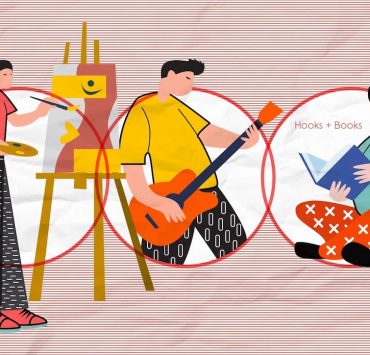Typhoons: The future of history

All is calm as I write this column; the sunshine breaking through overcast skies. Wind and rain in the wake of Typhoon “Carina,” are but a bad memory recorded in viral clips on Facebook and TikTok. Going through my files, I cannot find the typhoon chronology published in 1935 by Fr. Miguel Selga, SJ director of the Manila Observatory, that spans the years 1348-1934.
To list down all known typhoons in the Philippines, Father Selga waded through historical sources beginning with the 14th century travel account of Ibn Battuta to the ones he actually saw and experienced in 1934. I can only marvel at his efforts.
By the time World War II broke out, Selga had filled a box with 4,676 note cards containing bibliographic references on typhoons and another box of 1,825 note cards on earthquakes covering the years 1589-1899. Unpublished are thousands of notes on weather in Philippine folklore that he had hoped to study to know how folk observations led to early weather forecasting.
Selga’s catalog differentiates typhoons from storms or depressions. Aside from dates, added information was provided like pressure readings from scientific instruments and narrative description. From the historical sources accessible to Selga, he drew references to four typhoons from the 16th century, 23 from the 17th century, 35 from the 18th century, and 471 from the 19th century. Surely there was far more than this, Selga did not claim his catalog was complete, rather it is limited by what was recorded in historical sources.
Ibn Battuta is not considered a reliable source, after all it is from this travel account that we read about Tawalisi and the legendary Amazon, the multilingual Princess Urduja. There are two detailed 17th century Jesuit accounts that he drew from: Pedro Chirino’s “Relacion de las islas Filipinas” (1604) and Francisco Ignacio Alcina’s “Historia de las islas e indios de Bisayas” (1668).
Chirino wrote about flooding in Taytay: “In those days the town of Taytay stood at the water’s edge, on the bank of an estero or stream that descends from the mountains of Antipolo and joins the river near the mouth where the latter flows out of the lake … so low-lying is this valley that every year, like the land of Egypt by the Nile, it is submerged and flooded by the lake that overflows its bed with the torrent of so many rivers pouring into it, and remains submerged from about August to October or November. During this time therefore, the whole valley is. A lake as deep as a man’s head or more, so that one cannot travel about except by boat.
“… This flood not only used to submerge the town, to the extent that no one could use the streets, except by boat, as I did myself countless times, but although we had raised the floor of the church and made repairs as a precaution against the water, also submerged it rising up all the steps to the main altar itself … The first time I saw that my church was flooded and I could not say mass there, I believed at last what until then I could not bring myself to believe although I had been told about it many times.” When flooded, people attended mass three miles inland in Antipolo.
Alcina devoted a whole chapter to the “winds over here and their qualities and about the violent hurricanes that they call bagyos.” He describes the winds known as “amihan” and “habagat,” even a wind from the south known as “timog” when these winds come and go and the towns where they pass. He describes a bad north wind known as “kanaway” that brings cold and humidity that induces asthma and other ailments. Of the typhoons or bagyo he devotes many pages:
“These occur in these islands so often and so fierce that neither Virgil in his ‘Aenid’ nor Ovid in his ‘Pontus’ or any of the other poets I have read, come within a thousand leagues of relating their intensity or of expending half of their impetus. We see them very often and we suffer in them so much that it seems impossible that they will pass.
To put it briefly: when one of these bagyos is raging, and rare is the year when there is not one or two, not even the trees are safe in the midst of the forests, or the animals in their caves, or people in their houses or beasts in their burrows or even the smallest water worm in their holes or the smallest plants their bajera flattened to the ground by its lashing. No plant has a leaf remaining on it because it it tears everything down, breaks it up, shears it off, and scatters it over the ground. And so, whatever is visible and stands out somewhat perishes; even the most lowly object is pulled down or destroyed.”
Alcina describes churches and other structures brought down, even tall rooted trees. He added that at times even people standing are blown down by the bagyo. He had to walk hand in hand with others or in worst case scenario just lie on the ground till the storm passed. All these may be history, but in all the data lie patterns that might help us in the 21st century weather the bad weather of the future.
—————-
aocampo@ateneo.edu
Ambeth is a Public Historian whose research covers 19th century Philippines: its art, culture, and the people who figure in the birth of the nation. Professor and former Chair, Department of History, Ateneo de Manila University, he writes a widely-read editorial page column for the Philippine Daily Inquirer, and has published over 30 books—the most recent being: Martial Law: Looking Back 15 (Anvil, 2021) and Yaman: History and Heritage in Philippine Money (Bangko Sentral ng Pilipinas, 2021).


















